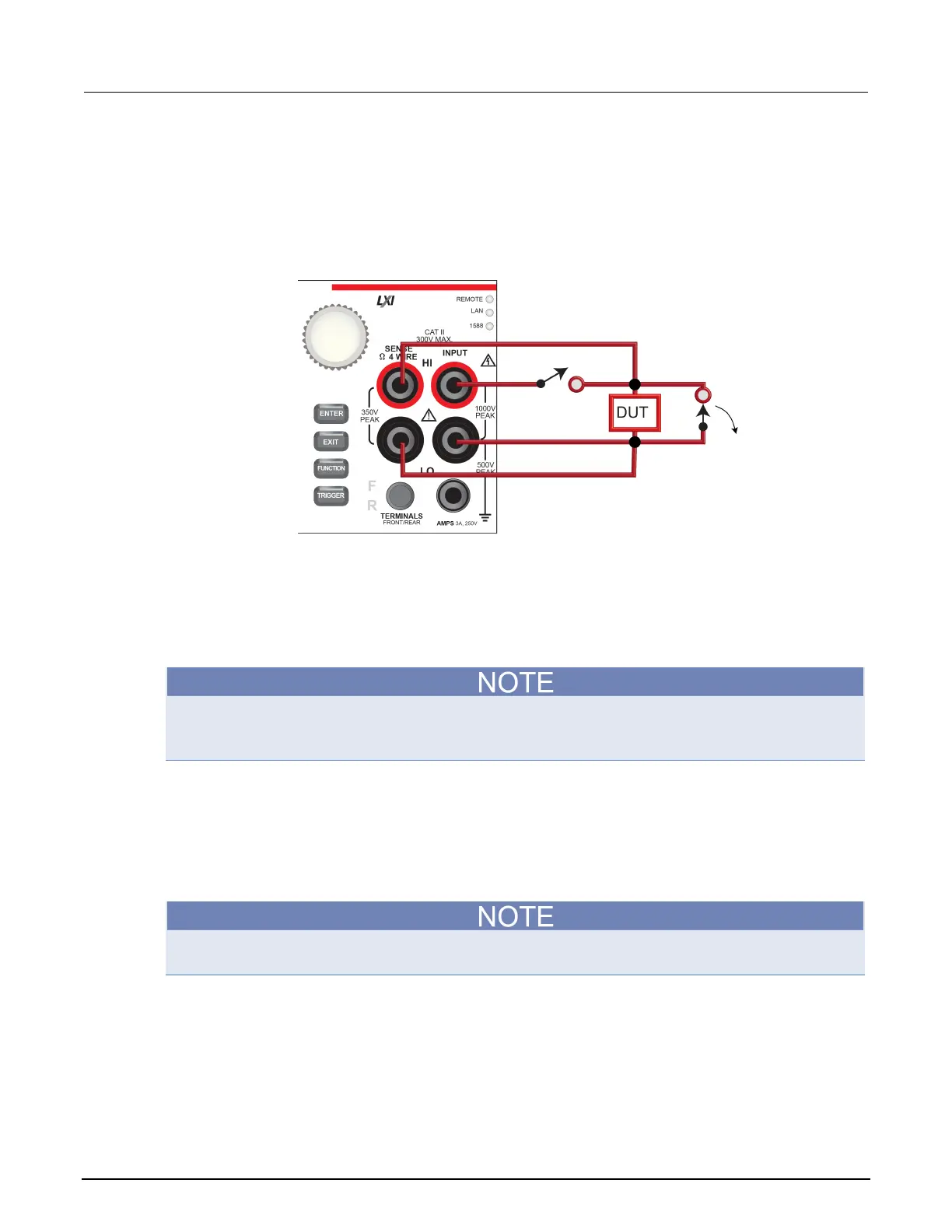4: Measure considerations Model DMM7510 7½ Digit Graphical Sampling Multimeter
4-14 DMM7510-901-01 Rev. B / May 2015
Solutions
Possible solutions to address cable effects:
1. Add a second switch to engage the test current after the short is removed, as shown in the
following figure.
Figure 144: Cable effects solution
2. Set the DMM to a higher dry-circuit ohms range as the 10 KΩ range with 5 µA of I
test
current. The
cable effects are directly reduced with reduced I
test
current.
3. For the cable that connects HI and LO to the DUT, choose a cable with a very low characteristic
impedance so that the maximum DUT voltage is small.
4. Terminate the end of the cable with an RC snubber that is less than 1 Ω in series with a parallel
10 µF and 1 MΩ, which maintains low voltage and a single damped response.
With offset compensation enabled and reading triggering halted, the idle test current of all dry-circuit
ranges is less than or equal to 10 µA. When the Model DMM7510 is in either of these setups, the
shorting switch across the DUT can be safely opened with minimal cable energy storage issues.
Offset-compensated ohm calculations
The presence of thermoelectric EMFs (V
EMF
) can adversely affect low-resistance measurement
accuracy. To overcome these offset voltages, you can use offset-compensated ohms if you are
making 4-wire resistance measurements on ranges up to 100 kΩ.
Instrument operations, including offset-compensated ohms, are performed on the input signal in a
sequential manner.
For a normal resistance measurement, the Model DMM7510 sources a current (I) and measures the
voltage (V). The resistance (R) is then calculated as (R=V/I) and the reading is displayed.
For offset-compensated ohms, two measurements are performed: one normal resistance
measurement, and one using the lowest current source setting.

